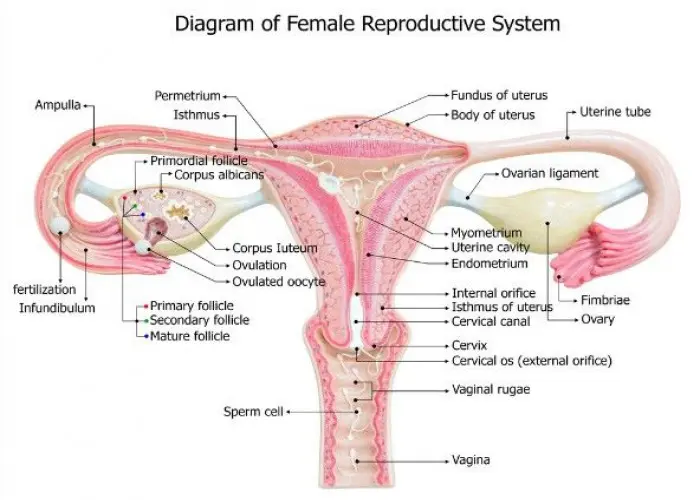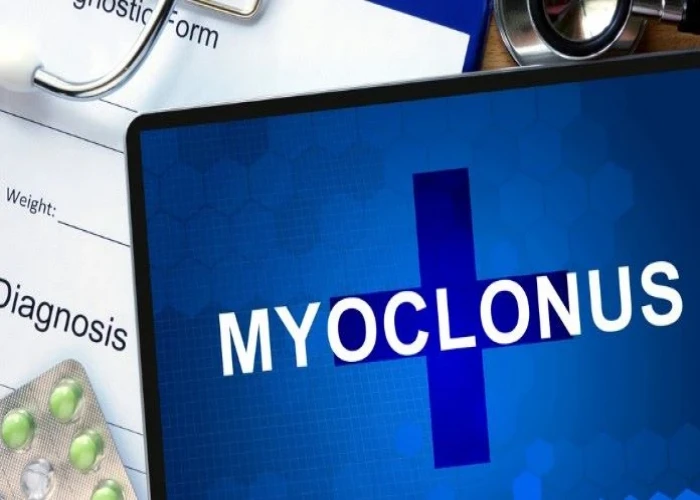 Welcome
Welcome
“May all be happy, may all be healed, may all be at peace and may no one ever suffer."
Female infertility

Female infertility refers to the inability of a woman to conceive a child after a year of trying to conceive through regular unprotected sexual intercourse. It can be caused by a variety of factors, including problems with ovulation, structural abnormalities of the reproductive organs, hormonal imbalances, autoimmune disorders, and age-related decline in fertility.
Some common causes of female infertility include polycystic ovary syndrome (PCOS), endometriosis, tubal blockages, pelvic inflammatory disease (PID), and uterine fibroids. Additionally, certain lifestyle factors, such as smoking, excessive alcohol consumption, and obesity, can also contribute to infertility.
Treatments for female infertility may vary depending on the underlying cause. Medications, such as clomiphene citrate, gonadotropins, or letrozole, can be used to stimulate ovulation. Surgical procedures, such as laparoscopy or hysteroscopy, can be used to remove blockages, fibroids, or other structural abnormalities. Assisted reproductive technologies (ART), such as in vitro fertilization (IVF), intracytoplasmic sperm injection (ICSI), or egg donation, may also be recommended in certain cases.
It is important to consult with a healthcare professional, such as a gynecologist or a reproductive endocrinologist, for a thorough evaluation and appropriate treatment options for female infertility.
Research Papers
Disease Signs and Symptoms
- Infertility
- Difficulty getting pregnant
Disease Causes
Female infertility
For pregnancy to occur, every step of the human reproduction process has to happen correctly. The steps in this process are:
- One of the two ovaries releases a mature egg.
- The egg is picked up by the fallopian tube.
- Sperm swim up the cervix, through the uterus and into the fallopian tube to reach the egg for fertilization.
- The fertilized egg travels down the fallopian tube to the uterus.
- The fertilized egg attaches (implants) to the inside of the uterus and grows.
In women, a number of factors can disrupt this process at any step. Female infertility is caused by one or more of the factors below.
Ovulation disorders
Ovulating infrequently or not at all accounts for most cases of infertility. Problems with the regulation of reproductive hormones by the hypothalamus or the pituitary gland or problems in the ovary can cause ovulation disorders.
- Polycystic ovary syndrome (PCOS). PCOS causes a hormone imbalance, which affects ovulation. PCOS is associated with insulin resistance and obesity, abnormal hair growth on the face or body, and acne. It's the most common cause of female infertility.
- Hypothalamic dysfunction. Two hormones produced by the pituitary gland are responsible for stimulating ovulation each month — follicle-stimulating hormone (FSH) and luteinizing hormone (LH). Excess physical or emotional stress, a very high or very low body weight, or a recent substantial weight gain or loss can disrupt production of these hormones and affect ovulation. Irregular or absent periods are the most common signs.
- Primary ovarian insufficiency. Also called premature ovarian failure, this is usually caused by an autoimmune response or by premature loss of eggs from your ovary, possibly as a result of genetics or chemotherapy. The ovary no longer produces eggs, and it lowers estrogen production in women under age 40.
- Too much prolactin. The pituitary gland can cause excess production of prolactin (hyperprolactinemia), which reduces estrogen production and can cause infertility. This can also be caused by medications you're taking for another condition.
Damage to fallopian tubes (tubal infertility)
Damaged or blocked fallopian tubes keep sperm from getting to the egg or block the passage of the fertilized egg into the uterus. Causes of fallopian tube damage or blockage can include:
- Pelvic inflammatory disease, an infection of the uterus and fallopian tubes due to chlamydia, gonorrhea or other sexually transmitted infections
- Previous surgery in the abdomen or pelvis, including surgery for ectopic pregnancy, in which a fertilized egg implants and develops somewhere other than the uterus, usually in a fallopian tube
Endometriosis
Endometriosis occurs when tissue that typically grows in the uterus implants and grows in other places. This extra tissue growth — and the surgical removal of it — can cause scarring, which can block fallopian tubes and keep an egg and sperm from uniting.
Endometriosis can also disrupt implantation of the fertilized egg. The condition also seems to affect fertility in less-direct ways, such as damage to the sperm or egg.
Uterine or cervical causes
Several uterine or cervical causes can interfere with the egg implanting or increase the risk of miscarriage:
- Benign polyps or tumors (fibroids or myomas) are common in the uterus. Some can block fallopian tubes or interfere with implantation, affecting fertility. However, many women who have fibroids or polyps do become pregnant.
- Problems with the uterus present from birth, such as an unusually shaped uterus, can cause problems becoming or remaining pregnant.
- Cervical stenosis, a narrowing of the cervix, can be caused by an inherited malformation or damage to the cervix.
- Sometimes the cervix can't produce the best type of mucus to allow the sperm to travel through the cervix into the uterus.
Unexplained infertility
In some cases, the cause of infertility is never found. A combination of several minor factors in both partners could cause unexplained fertility problems. Although it's frustrating to get no specific answer, this problem can correct itself with time. But you shouldn't delay treatment for infertility.
Disease Prevents
Female infertility
For women thinking about getting pregnant soon or in the future, these tips might help:
- Maintain a healthy weight. Overweight and underweight women are at increased risk of ovulation disorders. If you need to lose weight, exercise moderately. Strenuous, intense exercise of more than five hours a week has been associated with decreased ovulation.
- Quit smoking. Tobacco has multiple negative effects on fertility, as well as your general health and the health of a fetus. If you smoke and are considering pregnancy, quit now.
- Avoid alcohol. Heavy alcohol use may lead to decreased fertility. And any alcohol use can affect the health of a developing fetus. If you're planning to become pregnant, avoid alcohol, and don't drink alcohol while pregnant.
- Reduce stress. Some studies have shown that stress can cause couples to have poorer results with infertility treatment. Try to reduce stress in your life before trying to become pregnant.
Disease Treatments
Infertility treatment depends on the cause, your age, how long you've been infertile and personal preferences. Because infertility is a complex disorder, treatment involves significant financial, physical, psychological and time commitments.
Treatments can either attempt to restore fertility through medication or surgery, or help you get pregnant with sophisticated techniques.
Medications to restore fertility
Medications that regulate or stimulate ovulation are known as fertility drugs. Fertility drugs are the main treatment for women who are infertile due to ovulation disorders.
Fertility drugs generally work like natural hormones — follicle-stimulating hormone (FSH) and luteinizing hormone (LH) — to trigger ovulation. They're also used in women who ovulate to try to stimulate a better egg or an extra egg or eggs.
Fertility drugs include:
- Clomiphene citrate. Taken by mouth, this drug stimulates ovulation by causing the pituitary gland to release more FSH and LH, which stimulate the growth of an ovarian follicle containing an egg. This is generally the first line treatment for women younger than 39 who don't have PCOS.
- Gonadotropins. These injected treatments stimulate the ovary to produce multiple eggs. Gonadotropin medications include human menopausal gonadotropin or hMG (Menopur) and FSH (Gonal-F, Follistim AQ, Bravelle).
- Another gonadotropin, human chorionic gonadotropin (Ovidrel, Pregnyl), is used to mature the eggs and trigger their release at the time of ovulation. Concerns exist that there's a higher risk of conceiving multiples and having a premature delivery with gonadotropin use.
- Metformin. This drug is used when insulin resistance is a known or suspected cause of infertility, usually in women with a diagnosis of PCOS. Metformin (Fortamet) helps improve insulin resistance, which can improve the likelihood of ovulation.
- Letrozole. Letrozole (Femara) belongs to a class of drugs known as aromatase inhibitors and works in a similar fashion to clomiphene. Letrozole is usually used for woman younger than 39 who have PCOS.
- Bromocriptine. Bromocriptine (Cycloset, Parlodel), a dopamine agonist, might be used when ovulation problems are caused by excess production of prolactin (hyperprolactinemia) by the pituitary gland.
Risks of fertility drugs
Using fertility drugs carries some risks, such as:
- Pregnancy with multiples. Oral medications carry a fairly low risk of multiples (less than 10%) and mostly a risk of twins. Your chances increase up to 30% with injectable medications. Injectable fertility medications also carry the major risk of triplets or more.
- Generally, the more fetuses you're carrying, the greater the risk of premature labor, low birth weight and later developmental problems. Sometimes, if too many follicles develop, adjusting medications can lower the risk of multiples.
- Ovarian hyperstimulation syndrome (OHSS). Injecting fertility drugs to induce ovulation can cause OHSS, which is rare. Signs and symptoms, which include swollen and painful ovaries, usually go away without treatment, and include mild abdominal pain, bloating, nausea, vomiting and diarrhea.
- It's possible to develop a more severe form of OHSS that can also cause rapid weight gain, enlarged painful ovaries, fluid in the abdomen and shortness of breath.
- Long-term risks of ovarian tumors. Most studies of women using fertility drugs suggest that there are few if any long-term risks. However, a few studies suggest that women taking fertility drugs for 12 or more months without a successful pregnancy might be at increased risk of borderline ovarian tumors later in life.
- Women who never have pregnancies have an increased risk of ovarian tumors, so it might be related to the underlying problem rather than the treatment. Since success rates are typically higher in the first few treatment cycles, reevaluating medication use every few months and concentrating on the treatments that have the most success appear to be appropriate.
Surgery to restore fertility
Several surgical procedures can correct problems or otherwise improve female fertility. However, surgical treatments for fertility are rare these days due to the success of other treatments. They include:
- Laparoscopic or hysteroscopic surgery. Surgery might involve correcting problems with the uterine anatomy, removing endometrial polyps and some types of fibroids that misshape the uterine cavity, or removing pelvic or uterine adhesions.
- Tubal surgeries. If your fallopian tubes are blocked or filled with fluid, your doctor might recommend laparoscopic surgery to remove adhesions, dilate a tube or create a new tubal opening. This surgery is rare, as pregnancy rates are usually better with in vitro fertilization (IVF). For this surgery, removal of your tubes or blocking the tubes close to the uterus can improve your chances of pregnancy with IVF.
Reproductive assistance
The most commonly used methods of reproductive assistance include:
- Intrauterine insemination (IUI). During IUI, millions of healthy sperm are placed inside the uterus around the time of ovulation.
- Assisted reproductive technology. This involves retrieving mature eggs, fertilizing them with sperm in a dish in a lab, then transferring the embryos into the uterus after fertilization. IVF is the most effective assisted reproductive technology. An IVF cycle takes several weeks and requires frequent blood tests and daily hormone injections.
Disease Diagnoses
Disease Allopathic Generics
Disease Ayurvedic Generics
Disease Homeopathic Generics
Disease yoga
Female infertility and Learn More about Diseases

Somatic symptom disorder

Spontaneous coronary artery dissection (SCAD)

Nonalcoholic fatty liver disease

Myoclonus

Patellofemoral pain syndrome

Toxic shock syndrome

Spider bites

Arthritis
female infertility, মহিলা বন্ধ্যাত্ব
To be happy, beautiful, healthy, wealthy, hale and long-lived stay with DM3S.
